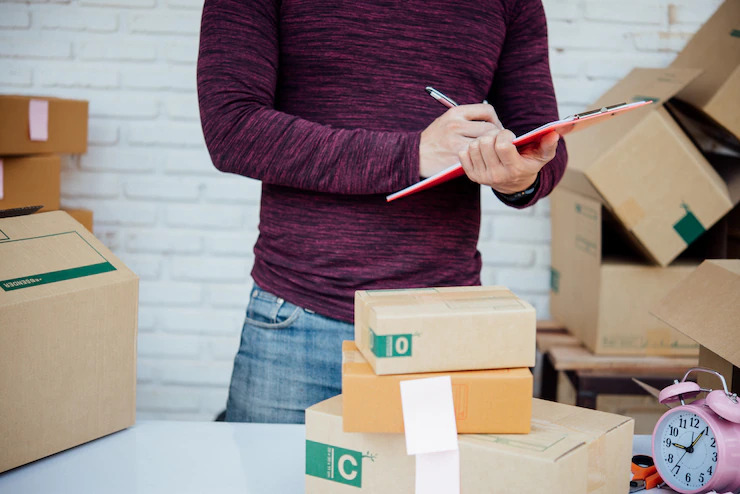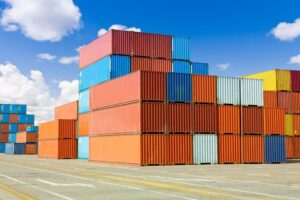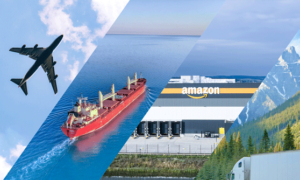If you are looking for a way to import goods from China to Portugal, you might be overwhelmed by the complexity and cost of international shipping. There are many factors to consider, such as the mode of transportation, the shipping method, the customs regulations, the documentation requirements, the shipping company, the shipping costs, the packaging and the shipment tracking. In this article, we will explain each of these aspects in detail and provide you with some tips and best practices to make your shipping process easier and more efficient.
shipping from China to Portugal
Understanding the logistics of international shipping

International shipping is the process of transporting goods across borders, usually by sea, air or land. Depending on the origin and destination of your shipment, you might need to use different modes of transportation and deal with different customs authorities and regulations. For example, if you are shipping from China to Portugal, you will need to use either sea or air transportation, and comply with the customs rules of both countries.
Different modes of transportation for shipping goods
The main modes of transportation for shipping goods are sea, air and land. Each mode has its own advantages and disadvantages, depending on the type, volume, weight, value and urgency of your goods.
Sea transportation is the most common and economical mode of shipping, especially for large and heavy shipments. However, it is also the slowest and most unpredictable mode, as it can take several weeks or months to reach your destination and be affected by weather conditions, port congestion and other delays. Sea transportation also requires more documentation and fees than other modes.
Air transportation is the fastest and most reliable mode of shipping, especially for small and light shipments. However, it is also the most expensive and environmentally unfriendly mode, as it consumes more fuel and emits more carbon dioxide than other modes. Air transportation also has stricter limitations on the size and weight of your goods.
Land transportation is the mode of shipping that involves using trucks, trains or buses to transport your goods by road or rail. It is usually used as a complementary mode to sea or air transportation, as it can help you deliver your goods from the port or airport to your final destination. Land transportation is relatively fast and flexible, but it can also be affected by traffic conditions, road accidents and border crossings.
Choosing the right shipping method for your needs

The shipping method refers to the way you arrange and pay for your shipment. There are two main types of shipping methods: FCL (full container load) and LCL (less than container load).
FCL means that you rent a whole container for your shipment, regardless of how much space you actually use. This is suitable for large and bulky shipments that can fill up a whole container or require more protection and security. FCL is usually cheaper per unit than LCL, but it also requires more upfront investment and coordination.
LCL means that you share a container with other shippers who have similar destinations. This is suitable for small and light shipments that do not need a whole container or have flexible delivery times. LCL is usually cheaper per shipment than FCL, but it also involves more handling and risk of damage or loss.
Customs regulations and documentation requirements

Customs is the authority that controls the movement of goods across borders. Customs regulations vary from country to country, but they generally aim to ensure the safety, security and legality of your goods. Customs regulations can affect the type, quantity, value and origin of your goods, as well as the taxes, duties and fees that you need to pay.
Documentation is the paperwork that you need to prepare and submit to customs authorities to prove the details of your shipment. Documentation requirements also vary from country to country, but they generally include:
- Commercial invoice: A document that shows the seller’s name and address, the buyer’s name and address, the description, quantity and value of your goods, the terms of sale (such as Incoterms) and the payment method.
- Packing list: A document that shows the number and type of packages in your shipment, the weight and dimensions of each package, the marks and numbers on each package and the description of your goods.
- Bill of lading (B/L) or air waybill (AWB): A document that shows the contract between you and your carrier (such as a shipping company or an airline), the details of your shipment (such as origin, destination, mode of transportation, shipping method) and the proof of delivery.
- Certificate of origin (CO): A document that shows where your goods were produced or manufactured. This can affect the customs duties that you need to pay or the preferential treatment that you can enjoy under certain trade agreements.
- Other documents: Depending on your type of goods and destination country, you might need other documents such as licenses, permits, certificates or declarations.
Finding a reliable shipping company or freight forwarder

A shipping company or a freight forwarder is a service provider that can help you arrange and manage your shipment from start to finish. They can offer you different services such as booking, transportation, documentation, customs clearance, insurance, warehousing and delivery. They can also advise you on the best mode of transportation, shipping method, packaging and cost optimization for your shipment.
Finding a reliable shipping company or freight forwarder is crucial for your shipping success. You should look for a service provider that has:
- Experience and expertise in shipping from China to Portugal
- Good reputation and customer reviews
- Competitive and transparent pricing
- Professional and responsive communication
- Comprehensive and flexible services
- Network and partnerships with other carriers and agents
Calculating shipping costs and managing your budget for shipping from China to Portugal

Shipping costs are the expenses that you need to pay for your shipment. They can vary depending on several factors such as the mode of transportation, the shipping method, the weight and volume of your goods, the distance and route of your shipment, the customs duties and fees, the insurance and the value-added services.
To calculate your shipping costs, you need to consider:
- The freight rate: The price that your carrier charges you for transporting your goods from one point to another. This can depend on the mode of transportation, the shipping method, the weight and volume of your goods, the distance and route of your shipment and the market demand and supply.
- The customs duties and fees: The taxes and charges that you need to pay to customs authorities for importing your goods. This can depend on the type, quantity, value and origin of your goods, the customs regulations of your destination country and the trade agreements between China and Portugal.
- The insurance: The protection that you can buy to cover the risk of damage or loss of your goods during transit. This can depend on the value and nature of your goods, the mode of transportation, the shipping method and the insurance policy that you choose.
- The value-added services: The additional services that you can request from your carrier or freight forwarder to enhance your shipping experience. These can include warehousing, packaging, labeling, inspection, consolidation, deconsolidation, delivery and more.
To manage your budget, you need to:
- Compare different quotes from different carriers or freight forwarders
- Negotiate for better rates and terms with your service provider
- Choose the most suitable mode of transportation, shipping method and insurance for your needs
- Optimize the weight and volume of your goods by using proper packaging
- Avoid unnecessary delays and penalties by preparing accurate documentation
- Track and monitor your shipment to avoid unexpected costs
Packaging and preparing your goods for shipment

Packaging is the process of wrapping, covering or enclosing your goods in suitable materials to protect them from damage or loss during transit. Preparing is the process of arranging, organizing or labeling your goods in a way that facilitates their handling, identification and delivery.
Packaging and preparing your goods properly is essential for your shipping success. You should:
- Use durable and sturdy materials such as cardboard boxes, wooden crates, plastic bags or bubble wrap
- Use adequate cushioning materials such as foam peanuts, paper or air pillows to fill up any empty spaces in your packages
- Seal your packages securely with strong tape or glue
- Label your packages clearly with your name, address, phone number, destination country, description of contents and any special instructions or warnings
- Mark your packages with symbols such as fragile, handle with care or this side up if necessary
- Measure and weigh your packages accurately to avoid any discrepancies or surcharges
Tracking and monitoring your shipment

Tracking is the process of checking the status and location of your shipment at any given time. Monitoring is the process of overseeing the progress and performance of your shipment throughout its journey.
Tracking and monitoring your shipment is important for your peace of mind and satisfaction. You should:
- Obtain a tracking number from your carrier or freight forwarder
- Use online tools or apps to track your shipment in real time
- Contact your service provider if you have any questions or concerns about your shipment
- Report any problems or issues that you encounter with your shipment
- Confirm the delivery of your shipment with a signature or a proof of receipt




